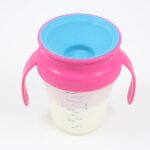
In the world of medical facilities, maintaining the cleanliness of equipment is more than just a regular task—it is a vital practice that directly affects patient outcomes and guarantees the highest standards of care. Join us as we explore this important subject, Cleaning Medical Equipment. Welcome to the heart of healthcare, where compassion meets precision, and every detail counts.
The sterility of medical equipment is a crucial component of healthcare, where medical professionals work tirelessly to provide the best care possible. This article takes readers on a thorough investigation of the subtle art of cleaning medical instruments and devices, a practice that goes beyond simple hygiene to protect patient safety, infection control, and the longevity of vital healthcare tools. From comprehending the significance of cleanliness to investigating the various kinds of medical equipment, selecting appropriate cleaning agents, implementing appropriate techniques, and creating protocols, this journey reveals the intricate web of meticulous care that characterizes healthcare facilities dedicated to maintaining the highest standards of sterility.
So, let’s venture into the realm where cleanliness and healthcare converge, unraveling the tips that form the backbone of ensuring the utmost sterility in the delicate landscape of healthcare facilities.
Here is our post on 5 Crucial Benefits of Professional Cleaning Services for Medical Facilities
The Importance of Cleaning
1. Infection Prevention
Clean medical equipment is the frontline defense against infections. Regular cleaning reduces the risk of cross-contamination and helps prevent the spread of infections within healthcare facilities.
2. Equipment Longevity
Proper cleaning extends the lifespan of medical equipment. Regular maintenance and cleaning ensure that devices function optimally, reducing the need for frequent replacements and contributing to cost-effectiveness.
3. Patient Safety
Cleaning medical equipment is synonymous with patient safety. Sterile instruments and devices minimize the risk of adverse reactions or infections, creating a safer environment for patients undergoing medical procedures.
4. Regulatory Compliance
Adhering to stringent cleaning protocols is crucial for regulatory compliance. Healthcare facilities must meet specific cleanliness standards to comply with health regulations and accreditation requirements.
5. Optimal Performance
Clean equipment performs better. Whether it’s surgical instruments, diagnostic tools, or monitoring devices, regular cleaning ensures that medical equipment functions at its best, providing accurate and reliable results.
See also our post on 10 Benefits of Professional Cleaning for Medical Facilities
Types of Medical Equipment
1. Surgical Instruments
Surgical instruments require meticulous cleaning due to their direct contact with patients’ bodies. Thorough cleaning and sterilization protocols are essential to prevent surgical site infections and ensure safe procedures.
2. Diagnostic Equipment
Devices like X-ray machines, ultrasound equipment, and CT scanners need regular cleaning to maintain the precision of imaging results. Cleaning also prevents the accumulation of contaminants that may interfere with diagnostic accuracy.
3. Monitoring Devices
Equipment used for patient monitoring, such as blood pressure monitors and ECG machines, should be regularly cleaned to ensure accurate readings. Proper cleaning contributes to the reliability of vital signs monitoring.
4. Endoscopes
Cleaning endoscopes is a highly specialized process. These intricate devices require careful attention to prevent the risk of infections associated with contaminated endoscopic procedures.
5. Infusion Pumps
Infusion pumps deliver medications directly into patients’ bodies. Regular cleaning prevents microbial growth in these devices, safeguarding against potential infections and ensuring the accurate administration of medications.
See also our post on 5 Comprehensive Benefits of Regular Cleaning for School Facilities
Choosing the Right Cleaning Agents
Mild Detergents
Use mild detergents for general cleaning. These detergents effectively remove dirt and contaminants without compromising the integrity of medical equipment or leaving residues.
Disinfectants
Select appropriate disinfectants based on the type of medical equipment. High-level disinfectants are essential for devices that come into direct contact with mucous membranes or non-intact skin.
Sterilization Methods
For critical medical instruments, sterilization methods such as autoclaving or ethylene oxide gas sterilization may be necessary. These methods ensure the complete elimination of microorganisms, including bacterial spores.
Alcohol-Based Solutions
Alcohol-based solutions are effective for disinfecting surfaces. However, it’s essential to ensure compatibility with the materials of the medical equipment and to follow manufacturer guidelines to prevent damage.
Enzymatic Cleaners
Enzymatic cleaners are particularly useful for removing organic material from instruments, such as blood or tissue. These cleaners break down and dissolve biological residues, enhancing the effectiveness of the cleaning process.
Adopting Proper Cleaning Techniques
Pre-Cleaning Inspection
Before starting the cleaning process, conduct a thorough inspection of the equipment. Identify visible contaminants and assess the condition of the device to determine the appropriate cleaning method.
Disassembly and Assembly
Disassemble equipment whenever possible before cleaning. This allows for better access to surfaces and ensures that all parts are thoroughly cleaned. Follow manufacturer guidelines for proper disassembly and assembly.
Manual Cleaning
Manual cleaning is a hands-on process that involves using brushes, cloths, and cleaning solutions to physically remove contaminants. It is a crucial step, especially for intricate instruments or those with hard-to-reach areas.
Automated Cleaning
Leverage automated cleaning equipment for efficiency. Automated washers or ultrasonic cleaners provide consistent and thorough cleaning, especially for items with intricate designs or complex structures.
Drying Protocols
Implement proper drying protocols after cleaning. Ensure that all parts are thoroughly dried to prevent the growth of microorganisms and to maintain the integrity of the medical equipment.
See also our post on Tips for Managing Waste and Recycling in Commercial Spaces
Establishing Cleaning Protocols and Schedules
Customized Protocols
Develop customized cleaning protocols for different types of medical equipment. Tailor protocols based on the manufacturer’s recommendations, the nature of the equipment, and the specific healthcare setting.
Regular Training
Provide regular training for healthcare staff on cleaning protocols. Continuous education ensures that healthcare professionals are well-informed and skilled in maintaining the sterility of medical equipment.
Documentation
Maintain detailed documentation of cleaning activities. Record the type of equipment, cleaning agents used, cleaning date, and personnel responsible. Documentation is crucial for audits, compliance, and quality assurance.
Integration with Workflow
Integrate cleaning protocols seamlessly into the workflow of healthcare facilities. Designate specific times for equipment cleaning, ensuring that it becomes a routine part of daily operations without causing disruptions.
Periodic Audits
Conduct periodic audits of cleaning protocols. Regular assessments help identify areas for improvement, ensure adherence to standards, and maintain a high level of cleanliness in healthcare settings.
Considering Environmental Factors
Temperature and Humidity Control
Control temperature and humidity levels in cleaning areas. Ideal conditions enhance the effectiveness of cleaning agents and prevent the growth of mold or bacteria during the drying process.
Ventilation
Ensure proper ventilation during cleaning activities. Adequate airflow helps disperse fumes from cleaning agents and promotes a healthier environment for healthcare personnel involved in the cleaning process.
Waste Disposal
Establish proper waste disposal protocols for cleaning materials. Dispose of contaminated materials according to healthcare waste management guidelines to prevent the spread of infections and protect the environment.
Eco-Friendly Practices
Consider eco-friendly cleaning practices. Explore options for using environmentally responsible cleaning agents and sustainable cleaning methods that align with broader efforts towards ecological responsibility.
Emergency Response Planning
Develop emergency response plans for spills or accidents during cleaning. Equip healthcare staff with the knowledge and resources to address unexpected situations promptly and effectively.
See also our post on Warehouse Organization and Cleaning: Maximizing Efficiency
Collaborating with Manufacturers and Industry Guidelines
Manufacturer Recommendations
Follow manufacturer recommendations for cleaning and maintenance. Manufacturers provide specific guidelines to ensure that cleaning practices align with the design, materials, and intended use of medical equipment.
Industry Standards and Guidelines
Adhere to industry standards and guidelines. Organizations such as the Centers for Disease Control and Prevention (CDC) and the World Health Organization (WHO) offer comprehensive guidelines for healthcare-associated infection prevention and control.
Collaboration with Infection Control Teams
Collaborate with infection control teams within healthcare facilities. Engaging with these teams ensures a holistic approach to cleaning practices, aligning with broader infection prevention strategies.
Participation in Training Programs
Participate in training programs provided by manufacturers or industry associations. These programs offer insights into the latest cleaning technologies, best practices, and updates in infection prevention strategies.
Continuous Monitoring and Improvement
Continuously monitor and improve cleaning practices based on feedback, audits, and advancements in the healthcare industry. Embrace a culture of continuous improvement to enhance the overall quality of healthcare services.
See also our post on Zero-Waste Kitchen Cleaning: Sustainable Solutions for Spills and Stains
Conclusion
The thorough cleaning of medical equipment is not just a routine task; rather, it is a fundamental component of high-quality healthcare. Understanding the significance of cleaning, recognizing the various types of medical equipment, selecting appropriate cleaning agents, implementing appropriate cleaning techniques, establishing protocols, taking environmental factors into account, and working with manufacturers and industry guidelines are all critical components in maintaining the sterility of healthcare facilities. By embracing these suggestions and implementing them into daily practices, healthcare professionals help create a more secure and dependable healthcare environment, where patients’ well-being is maintained with the utmost sterility and accuracy.







